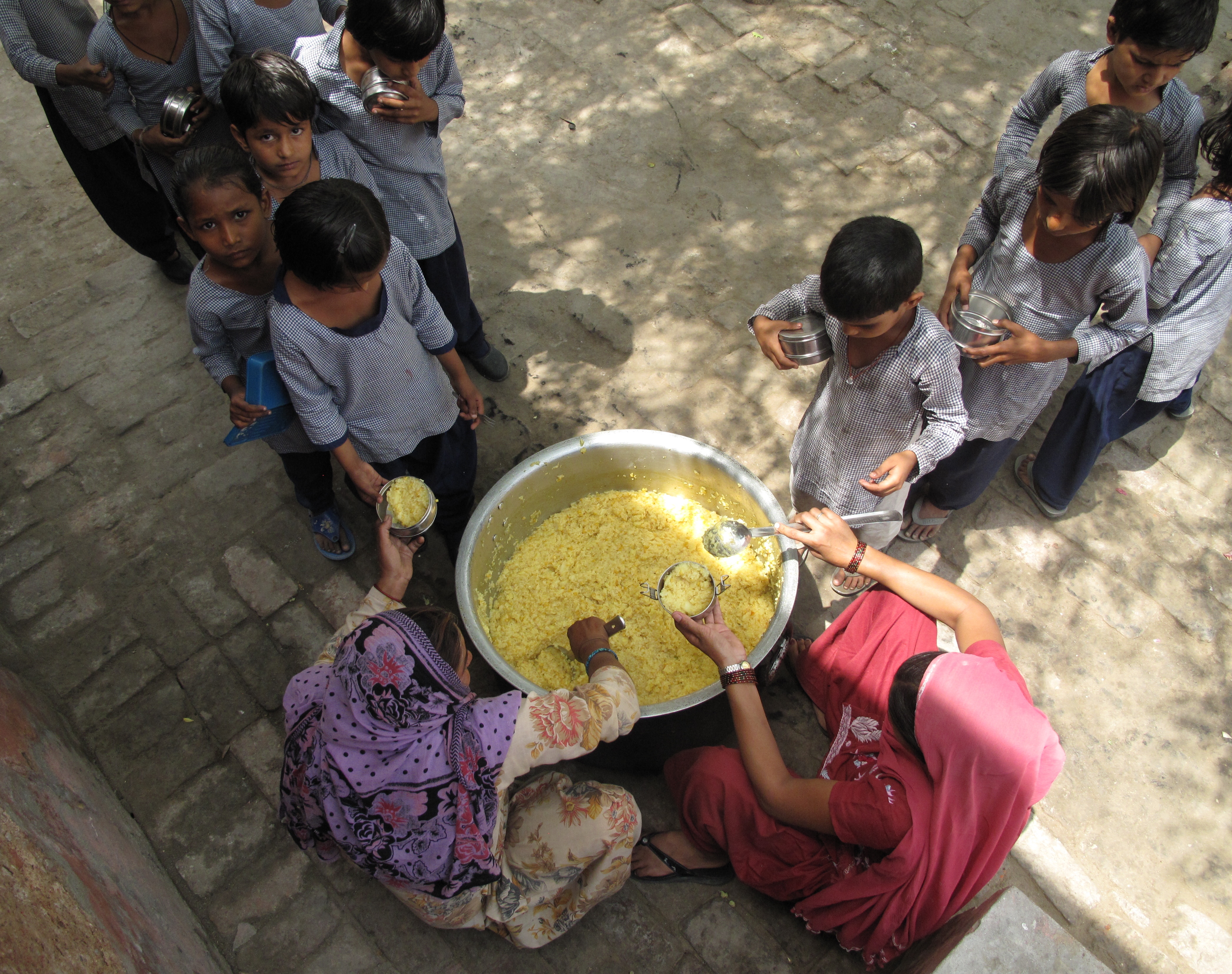
INDIA: A FREE LUNCH AND MORE
A year ago this month 23 schoolchildren in India died because the food they had eaten as part of a free lunch program was laced with pesticide. The tragedy evoked the awful consequences of corruption, government mismanagement, and public indifference to the well-being of disadvantaged Indian children. But as Pulitzer Center grantee Rhitu Chatterjee reports in a fascinating three-part series for PRI's The World, the free lunch program itself is essential and generally a success.
The program benefits 120 million children a day, Rhitu says, making it one of the world's largest anti-poverty programs—and for many of those children it is the source of the day's only real meal. The program, instituted in 1995, has contributed to increased school enrollment and attendance as well as improved health. Among other, unanticipated benefits are jobs for the low-income women who work as school cooks and the breaking down of caste barriers in many regions as children from different backgrounds grow accustomed to eating together.
"As I wrap up my work on this series, I am left feeling an immense sense of awe," Rhitu says in the last of her reports for The World. "I'm in awe that in a country as vast and diverse as India, where everything is slowed down by red tape and corruption, the mid-day meal program has more or less succeeded in what it set out to do: improve child nutrition and increase school enrollment and attendance."
BRAZIL: THE WORLD CUP, FROM THE STREETS AND THE BEACH
Pulitzer Center grantee Matthew Niederhauser concluded his series of photo essays for The New Republic with another memorable behind-the-scenes look at the world's biggest sports event. Matthew watched Brazil lose the consolation game on television, from the Mangueira favela that overlooks—across an unbridgeable divide—the Maracanã stadium that is Brazil's top soccer shrine. On the day of the finals he captured the tournament's biggest street protest and then took the metro to Copacabana beach, "the epicenter of World Cup revelry. I felt like I was entering a different world only minutes after being chased by riot police and pepper sprayed. All of sudden it was sand, surf, and caipirinhas."
TURKEY: WHAT THE CAMERA SAW
Pulitzer Center grantee Jenna Krajeski, in the latest from her continuing project on protest in Turkey, reports for Harper's in forensic detail on efforts to establish whether police were responsible for the death of 22-year-old Ahmet Atakan, who was killed on September 10, 2013, in the city of Antakya during a wave of anti-government protests across the country.
Jenna concludes that the evidence is ambiguous: Some camera footage and eyewitness reports suggest that Atakan died from injuries sustained when he fell from the roof of a building; others, that he was struck in the neck by a tear-gas canister. What was clear, she reports, was general police excess: Some 130,000 canisters of tear gas were fired during the first 20 days of protests, according to Amnesty International, many of them shot horizontally in a way that renders them far more dangerous.
"Atakan's family, for their part, could barely watch the videos," Jenna writes. "What they showed, the family already knew. 'There could be many things that caused his death,' Atakan's uncle said. 'But the reality is, if the police hadn't been there, Ahmet wouldn't have died.'"
Until next week,
Jon Sawyer
Executive Director





